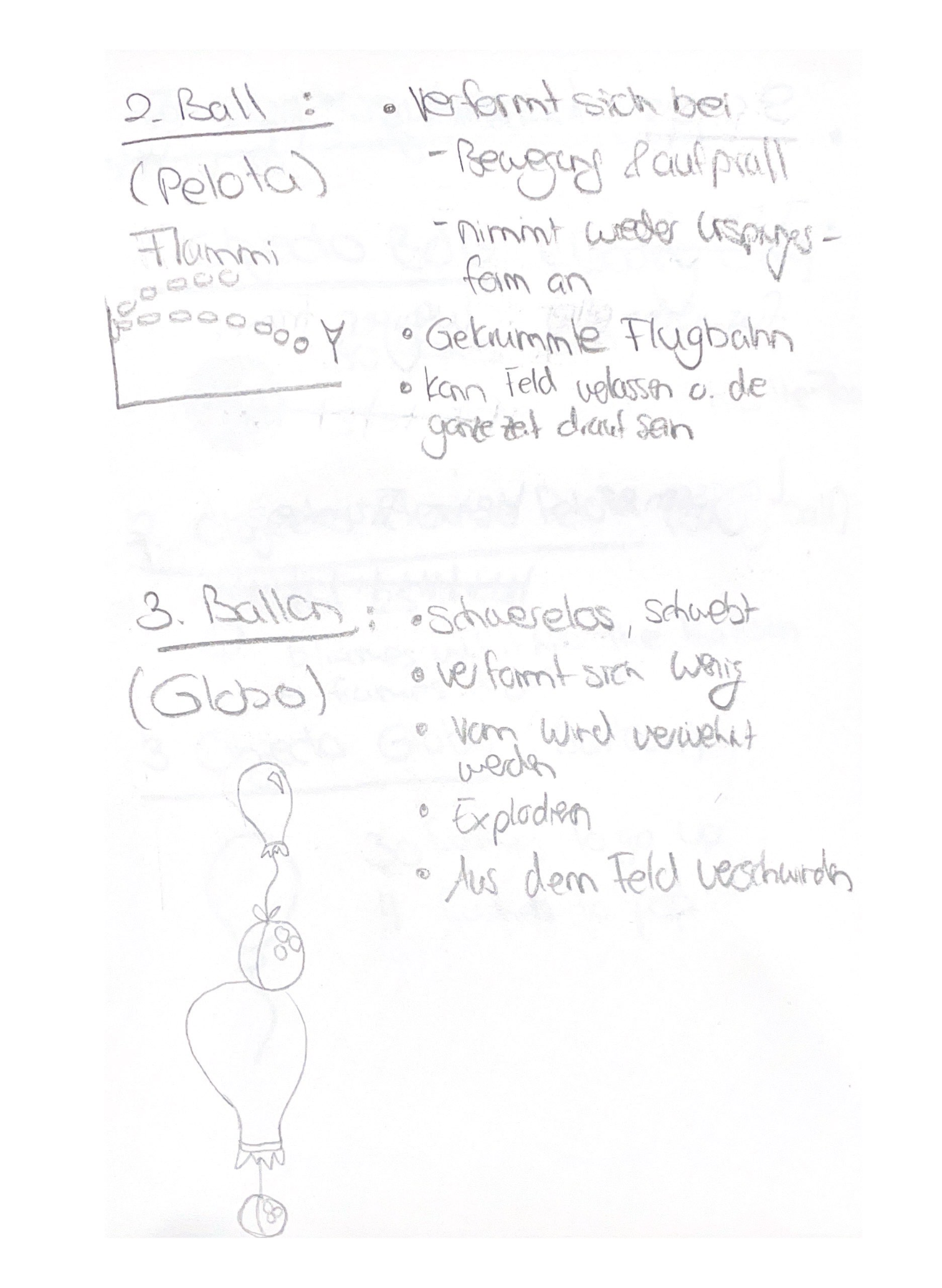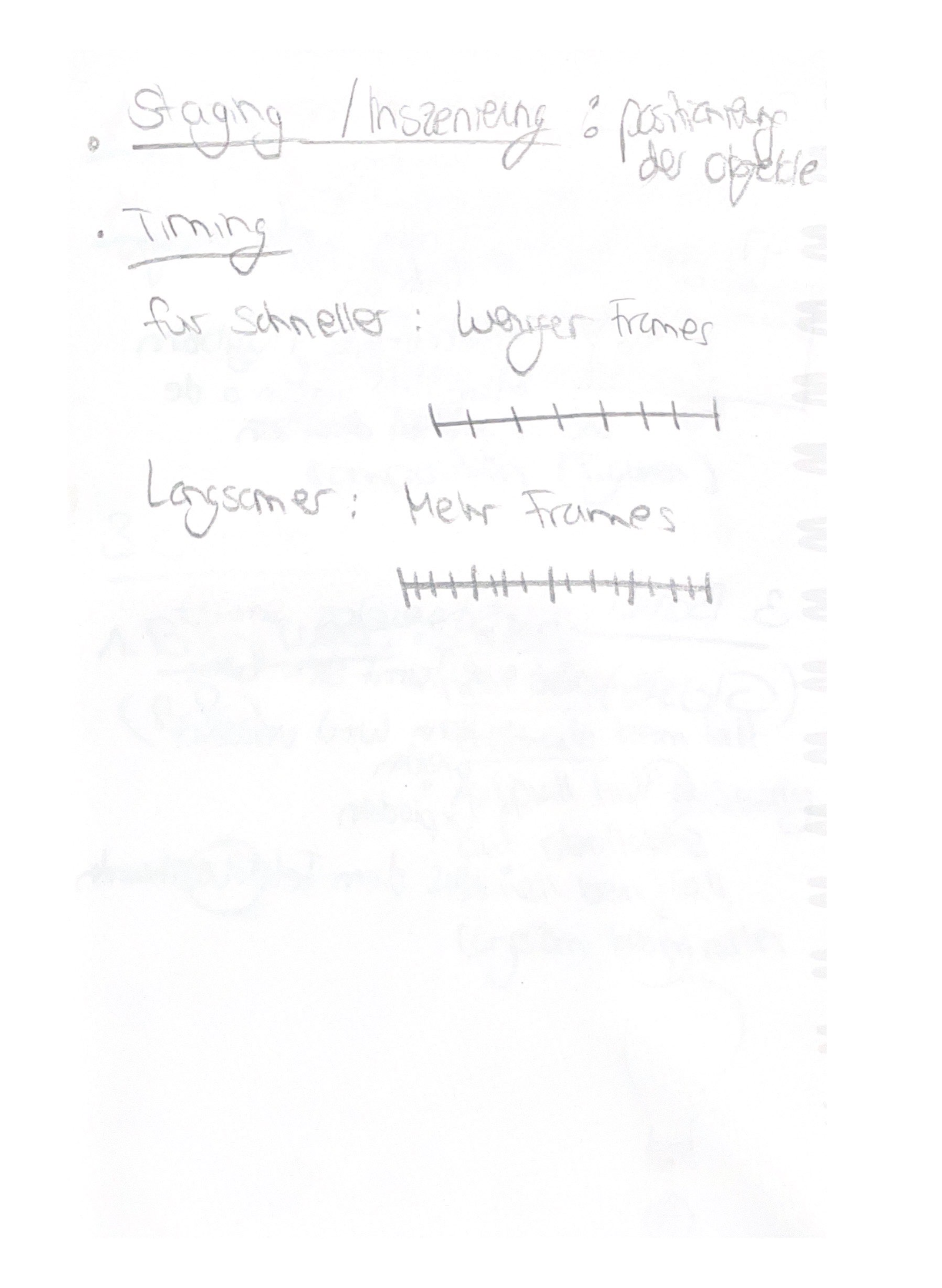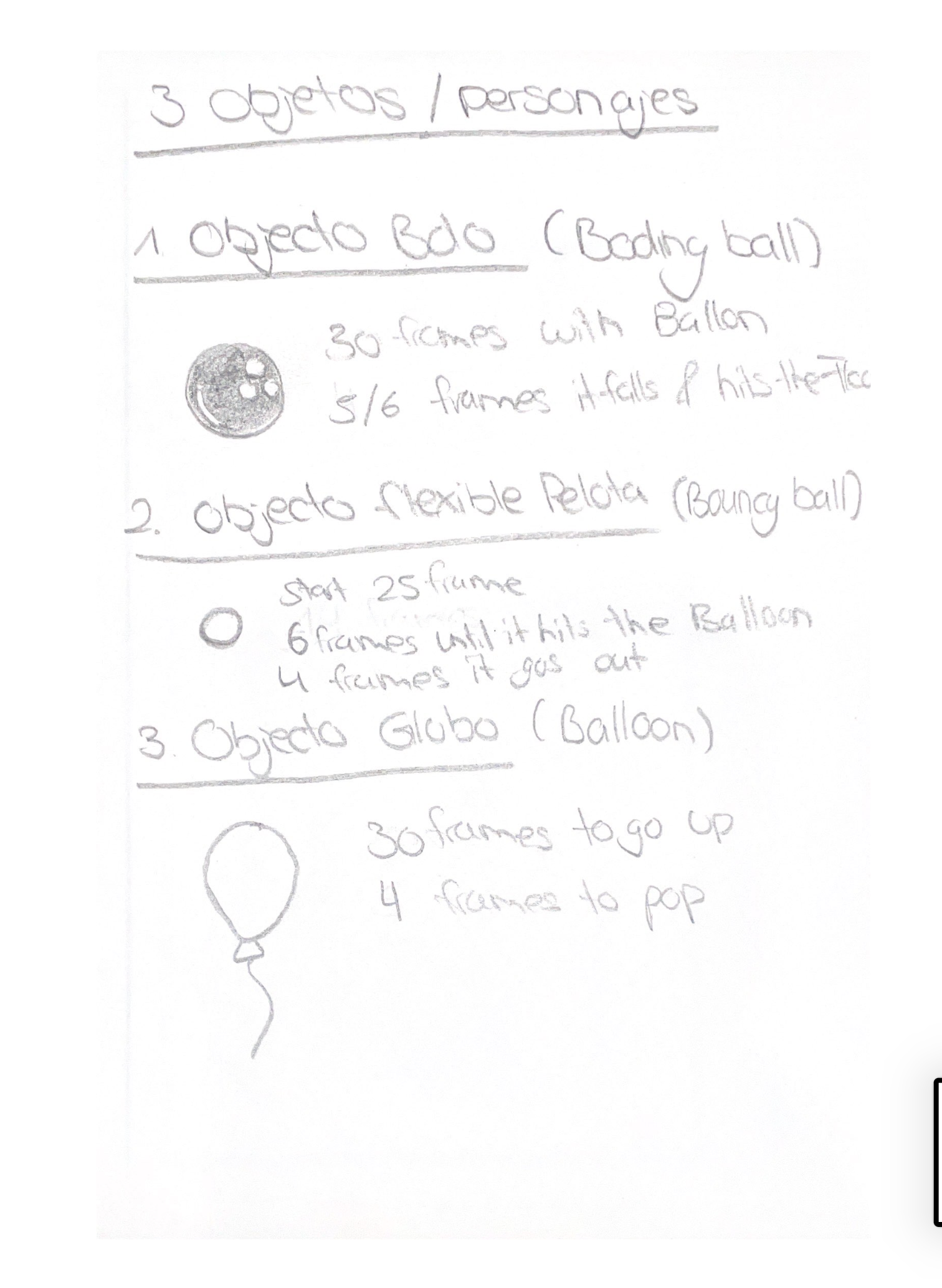In this assignment, we had to build upon our experiences from our previous practice 2 and design three non-human elements (a metal bowling pin, a rubber ball, and a balloon). These elements were supposed to take the form of a circle and have different characteristics such as size, color, and material. The task involved considering various motion principles such as non-linear trajectories, action curves, interlining, over-action, and experimentation with depth in the composition of the scene. It also included applying types of movements like uniform (slow or fast), accelerated and decelerated movements to emphasize the effects of falling, rising, and recovery. We were given the freedom to place the elements within a designated area on paper or digitally (1920 x 1080), with the recommendation to work with depth. The suggested composition proposed placing the balloon at the top and the other two elements at the bottom, considering the movements and reactions of the elements to different obstacles. The maximum animation duration was 6 seconds at 12 frames per second. The technique could be traditional drawing on paper with perforated sheets and a light table or digital drawing. The learning objectives included consolidating previous principles, planning actions and trajectories, working with the design of the elements, studying deformations during movement, applying anticipation, acceleration, and deceleration, as well as experimenting with new concepts like compression, stretching, over-reaction, and weightlessness. The proposed methodology involved defining each object with its formal and material characteristics and its possibilities of movement, actions, reactions, and anticipations. It also included writing a script for the animation, using an area chart to plan the layout, defining trajectories, thinking about actions and establishing the position of key drawings, finding key drawings by paying attention to anticipations, actions, reactions, and their deformations or lack thereof in the direction of movement. Once this was done in the planning sheets or layouts, we moved to clean key drawings on separate sheets, layers, remembering the positions of all three in each one. We worked by interleaving always, added some in-betweens, tested again, and once tested, we finished interleaving, tested again, evaluated, and created the final animation. The deadline for submission was November 25th, and we were required to submit a description of the actions, drawings of the characters and key studies, one or more scene setups, final testing, the definitive animation in mp4 format, a finished piece with a free technique, self-evaluation, and an updated blog link.
First thoughts and sketches
My initial thoughts and plans for the assignment began with considering which three objects I wanted to use or depict. After some deliberation, I settled on a bowling ball, a balloon, and a bouncy ball. The concept involved the balloon flying through space with the bowling ball, where the balloon struggled to lift the ball. Once they reached the top, the bouncy ball would enter, causing the balloon to burst. The bowling ball would then fall, breaking through the ground. This idea intrigued me as it created an interesting dynamic between the objects, incorporating various motion principles such as weightlessness, upward and downward movements, and interactions. My goal was to creatively and dynamically translate this concept into my animation, while applying the given principles and techniques to the best of my ability.
Supporting Material/ Material de Apoyo




Schedule/ Cronograma
I made too many drawings here. Likewise, the balloon did not yet have the correct movement. I corrected this the next time I tried.
Here I have now adjusted the balloon, divided the frames better and optimized the flight path.
Final Video/Animation
Reflection on my work
Embarking on the task of creating an animation, I chose to use Photoshop instead of Adobe Animate for the first time. The challenge involved designing three non-human elements—a metallic bowling ball, a rubber ball, and a balloon—and bringing them to life through motion. Applying principles like non-linear trajectories and varied movement styles, I encountered and learned from mistakes, particularly in the balloon's struggles to lift the bowling ball, adding character and weight to the objects.
To enhance my digital drawing skills, I invested in a graphics tablet. This new acquisition posed initial challenges as I had never used such a device before. Adjusting took time, but I am now content with incorporating this technology to enhance my creative abilities. This experience not only improved my animation but also expanded my proficiency in handling digital drawing tools.
.

